#rescue on fractalus
Text

UK 1987
#UK1987#GREMLIN GRAPHICS#ACCESS SOFTWARE#LUCASARTS#ACTION#SPORTS#BOXING#C64#AMSTRAD#SPECTRUM#THE WAY OF THE TIGER#BEACH HEAD II THE DICTATOR STRIKES BACK#RESCUE ON FRACTALUS#BARRY MCGUIGAN WORLD CHAMPIONSHIP BOXING#STAR GAMES ONE
10 notes
·
View notes
Text
TV'S TV 083
#by TVSTV1#tv's tv#rescue on fractalus!#80s video games#retro video games#video#flashing lights#arcade#1984
3 notes
·
View notes
Quote
ジャンプスケア(jumpscare)は、ホラー映画やコンピュータゲームでよく用いられる、観客を驚かせ恐がらせることを意図して主に大きな恐ろしい音と共に画像(映像)や出来事を突然変化させるテクニック[1]。1980年代以降の映画でよく見られるジャンプスケアは、「ホラー映画の最も基本的な構成要素の1つ」と言われている[2]。ジャンプスケアは、映画の中でサウンドトラックが静かで観客が何か驚くような事が起こると思っていない時[3]または、長時間の緊張の突然の決着[4]として用いることで観客を驚かせることができる。
一部の批評家はジャンプスケアを視聴者を怖がらせるための怠惰な手法と評しており[5]、この手法に依存しすぎた結果、近年のホラージャンルは衰退し、ジャンプスケアは現代ホラー映画のクリシェとして確立したと考えている[6]。
映画におけるジャンプスケア[編集]
1980年代以前はホラー映画のジャンプスケアは比較的まれであったが、ホラーの一ジャンルである「スラッシャー」の人気が高まるにつれて80年代初頭に徐々に普及しつつあった[7]。
1976年の映画『キャリー』には、最初の現代的なジャンプスケアの1つがある[8]。映画の終わりのそのシーンは、1980年の映画『13日の金曜日』で死んだと思われた悪役が生きていたことを示すラストのジャンプスケアの使用へのインスピレーションとして挙げられている[9]。
1979年の映画『夕暮れにベルが鳴る』では、ジャンプスケアの形態を用いて主人公と視聴者の両方に敵の位置を突然明らかにする。映画作家のウィリアム・チェンは、これを「映画の主人公を取り囲む防壁の突然の消失」を引き起こし、さらに在宅の視聴者に侵入者がどことなく彼らにも近づいているという感覚を与えていると説明している[10]。
2009年の映画『スペル』はジャンプスケアが全体に含まれており[4]、監督のサム・ライミは、「できれば観客を飛び上がらせる大きな衝撃」を伴うホラー映画を製作したかったと語っている[11]。
コンピュータゲームにおけるジャンプスケア[編集]
『Rescue on Fractalus!』はジャンプスケアを用いた最初のゲームであるとみられている。この一人称のフライスルーゲームでは、ナビゲーターは他の墜落機のパイロットを見つけて救出するために着陸を試みる。一部のパイロットは変装したエイリアンであり、突然視界に現れうなり声を上げてコックピットのガラスを割ろうとする[12]。
『バイオハザード』は、ジャンプスケアを用いた最初の現代ゲームとして引用されている。ゲームの舞台となる洋館内部のある廊下に行くとBGMが小さくなっていき、そのままプレイヤーが歩いて通り過ぎようとすると廊下のほぼ中間地点でゾンビ犬が突然窓を割って内部へと侵入し、BGMの音量と激しさがピークに達する。
ゲーム『Daylight』は「ジャンプスケアの媒介物」であると表現され、批評家は同作がジャンプスケアをうまく使用したことを称賛したが、ゲームはジャンプスケアのみを備えていただけであったため、プレイヤーを怖がらせるための十分なツールではなかったとコメントした[13][14]。
2014年のコンピュータゲームシリーズ『Five Nights at Freddy's』は、ゲーム全体でジャンプスケアを用いていることなどから、「ライブ配信に最適」と表現されている[15]。
フィットネスゲーム『Wii Fit Plus』に収録されているゲーム「座禅」は、プレイヤーは背筋をまっすぐに伸ばして静止して座る必要があり、ろうそくが燃え尽きるまで(180秒未満)集中しなければならない。プレイヤーは時折���気を散らさせようとするための奇妙な音を聞くことになる。スコアはプレイヤーがどれだけ長くろうそくに火を灯し続けられたかで変わる。プレイヤーが動いた場合(ほぼわずかでも)、「カツ!」という大きな叫び声ともに白の大文字「喝」が突然画面上に点滅し、ゲームは終了する。
『スーパー マリオパーティ』は、ミニゲーム「おこさないでハナちゃん」でジャンプスケアを用いている。このミニゲームでプレイヤーは寝ているハナちゃんを起こすことなく、Joy-Conを左から右へとゆっくりと慎重に動かしてできるだけ多く愛撫する必要がある。ハナちゃんを愛撫するたびにプレイヤーはポイントを獲得するが、ランダムなポイントで突然ハナちゃんが怒りで目を覚ましてしまい、ハナちゃんを起こしたプレイヤーは全ポイントを失ってしまう。
ゲームの批評家の中にはジャンプスケアに批判的な者もおり、AUTOMATONのSyohei Fujitaは「私たちは人間だというのに、犬猫ですらびっくりするようなこと――たとえば、とつぜん目の前で手を叩くとか――で驚かされるなどというのは、こちらの尊厳を糞にまみれた土足で踏みにじられるような感じがする。」と、ジャンプスケアに対する否定的な見解を述べている[16]。
ジャンプスケア - Wikipedia
9 notes
·
View notes
Text
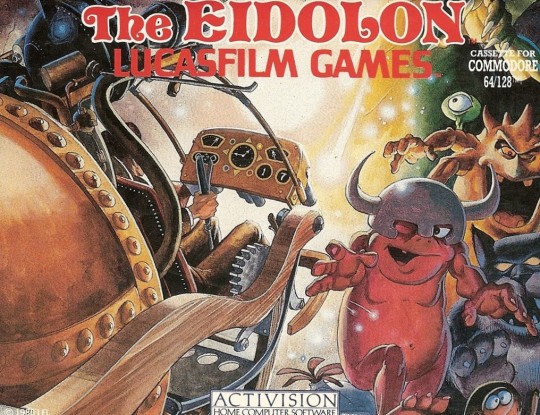

The Eidolon (Atari 8-Bit)
Developed/Published by: Lucasfilm Games / Epyx
Released: 12/1985
Completed: 07/04/2023
Completion: Beat the final dragon.
Trophies / Achievements: n/a
The Eidolon is one of the very first games I got for my Amstrad CPC. Mind those mail order club “eight CDs for a penny” scams, where you’d get a bunch of things for free as long as you give the company “implied license” for them to send you things at full price in future unless you can work your way out of it? Well, we definitely did one of those when I got my Amstrad CPC and my dad definitely managed to get out of it ahead… somehow.
Of course, it depends on your definition of “ahead.” I was given full freedom to select the games I wanted for the Amstrad, and considering I was a tiny child it’s not like I had any (literally any) critical faculties. So I know we got the Amstrad CPC conversion of the original Star Wars Arcade machine. And outside of that, I know we got Inflitrator and I know we got The Eidolon.
Strangely, I’ve already written about Infiltrator once in passing, and in a write-up of one of Lucafilm’s “launch” releases, Rescue on Fractalus (the other, Ballblazer). With Infiltrator, I could never get the bloody helicopter to take off because I was a tiny child. With The Eidolon? The disk almost never worked.
So maybe we didn’t come out ahead, even for our penny. As far as Infiltrator, I remember getting the helicopter to take off once. With The Eidolon, I remember getting it to load once, or twice, being confused by what was going on, possibly seeing the first dragon that I’d looked at for so long on the back of the box, and giving up because I had no idea what to do.
Well, it’s 2023 and I have to say that with the manual to hand, the entire interne on offer, and “being an adult” it took me a bloody long time to understand what the fuck you’re supposed to do in this.
To not get ahead of ourselves, let’s start with what The Eidolon is. It’s one of Lucasfilm’s second “wave” of releases from the end of 1985, which amounted to The Eidolon and Koronis Rift. These titles begin the “forgotten” era of Lucasfilm between Rescue and Fractalus/Ballblazer and Maniac Mansion, and are almost totally unheralded (although some people do seem to like Koronis Rift a lot.) Oddly–and I don’t have my copy of Rogue Leaders to hand, nor offhand knowledge if it even covers this–the unfettered creative hotbed of early Lucasfilm knocks out two games entirely built around the fractal landscapes of Rescue on Fractalus at once, which… well, I guess it’s efficient.
The Eidolon’s take is to just “flip” the mountain landscapes of Rescue on Fractalus to turn them into caves, which is, to be fair, a decent use. The problem is, unfortunately, the game designed around this. Designed by Charlie Kellner–who doesn’t seem to have stuck with video games after 1994’s the Page Master–the game was originally intended to be a narrative where the player plays as the dragon versus a knight, but due to the limits of what they could do with the Atari 8-bits they ended up sanding things off until all they had were, well, caves to walk around, and thanks to Charlie’s interest in HG Wells, the game suddenly became about an inventor of a mysterious craft being transported to the depths of his own mind which just happened to look exactly like a bunch of samey grey caves.
To be fair to Charlie, there’s a couple of firsts or near-firsts here. The Eidolon, in some respects, one of the earliest “first person shooters” considering that it’s the main way you interact with the world (even though, as I’ll go on to explain, not in a way you’d expect); Maze/Maze War from 1973 is definitely earlier, but there’s a dearth of examples in between, and this is (as far as I can be arsed to research) the earliest with smooth 3D movement. And The Eidolon is probably the first steampunk video game. Sure, the genre feels embarrassing now. But not if you were first!
Anyway. The Eidolon has a beautiful manual, written from the perspective of the inventor, that (unfortunately) it takes real effort to understand the intended play for, so I’ll summarise it here.
There are eight levels.
Your goal on each level is to defeat the dragon you’ll find somewhere in the maze. You can’t get to the dragon until you collect the associated crystals required to awaken in.
You collect the crystals by killing monsters, all of whom are sleeping in dead-ends in the maze until you wake them up by walking up to them.
You defeat monsters by shooting energy balls at them, usually the red ones. You’ve got four types of energy ball to fire: red (damaging), gold (only useful against some dragons, I think?), blue (freeze enemies), green (transform enemy into something else. Doesn’t transform dragons.)
Sometimes there are red energy balls flying around that will damage you; fire a red energy ball at them to turn them into a harmless gold energy ball.
Everything you do costs energy, but handily there are energy balls floating about all over the mazes and you can capture them.
When awoken, dragons will also fire energy balls at you, but you can capture those too!
You’ve got a time limit to finish the game, and only get a couple minutes added for each level you beat, so you can’t dawdle and need to accept you’ll have to map the mazes to actually finish the game (or *cough* find a map online *cough*).
You die when you run out of energy.
That’s about it, basically. It is not especially deep, and I have to admit once I’d finally worked it all out I was pretty disappointed it was this slight. While moving around the maze is breezy enough, the technical limitations make most of the action, at best, clumsy button bashing. Every enemy is just standing in a corner, basically waiting for you to walk up to them and fire just enough fireballs at them to kill them (it’s amusing that contemporary reviews complained “why can’t you talk to the monsters”) and combat with the dragons locks you into the space so you basically just have to hammer the “fire energy ball” and “capture energy ball” buttons as fast as you can to get it over with as quickly as possible. There’s supposedly some tactics to it, but fireballs are on screen for a handful of frames making it almost worthless to try and time it out.
In fact, playing this rather brutally aggravated my wrists as the final boss is a marathon of button bashing (I read one forum poster stating that they had to put their Atari on the floor to mash the spacebar with their foot!) and it leads to one of the most hilariously baffling ending sequence where (spoilers!) Robert Goulet hands you a pterodactyl egg. It is… not worth it.
I hate to say it but the problem with The Eidolon is that it’s not really… anything. It’s a collection of things, for sure, but they don’t actually add up to a video game. The only thing I really thought was that interesting was having to use the “transform” energy ball on certain enemies so you could defeat them, but that’s… not much.
It’s a real missed opportunity, too, because the smooth scrolling cave represented a perfect opportunity to push the CRPG forward. Yes, Ultima IV had really only just come out, but Wizardry had been kicking since 1981, and the tech here is good enough that it’s not like you have to do anything nearly as complex. Just a simple dungeon crawler would have been pretty incredible, but it’s possible I’m asking a bit much. I mean… if you really get down to it, Wolfenstein 3D is less complex than this, so it may simply be that this was the right seed of an idea at the wrong time technologically, and as soon as things moved forward a bit both Wolfenstein 3D and Ultima Underworld would be possible. The Eidolon just doesn’t really manage to be a forefather of either.
Will I ever play it again? I won’t. I did think about playing through the CPC version of this instead of the original, which is a bit more colourful if a touch slower. But I was worried it wouldn’t load properly. Some things stick with you..
Final Thought: Above I mentioned this was from Lucasfilm’s forgotten era, and I really do mean it: it’s quite remarkable how little information is about this game online despite being from one of the most beloved developers probably ever, and I do think it’s a shame, dead-end or not. I mean I’m very glad I finally played it. I got my dad’s penny worth.
Support Every Game I’ve Finished on ko-fi! You can pick up a digital copy of exp. 2600, a zine featuring all-exclusive writing at my shop, or join as a supporter at just $1 a month and get articles like this a week early.
#video games#games#gaming#lucasfilm#lucasfilm games#lucasarts#the eidolon#eidolon#atari 8-bit#atari 800#review#txt#text#1985
5 notes
·
View notes
Link
In the days before LucasArts, when Lucasfilm Games was the company that spearheaded gaming development at Lucasfilm, one of it's earliest successes was the 1985 game Rescue on Fractalus. IGN have delved into the history of the game and its development - a far cry from the multi-million dollar epics of today - and reveal a number of absolutely fascinating pixels of information, including this regarding then Lucasfilm President himself, George Lucas. When the Rescue and Ballblazer projects reached beta, Star Wars director and head of Lucasfilm himself, George Lucas, wanted to try the games. Fox recalls that George picked up the joystick and immediately said “How come the fire button doesn’t work? Where’s the fire button?” Fox told him about his idea of not having direct combat and Lucas asked if it was a gameplay decision or a philosophical decision: “Did you do this to make a better game or due to your beliefs?” “And I said, ‘well, more the latter, I guess.’ George said: ‘I want a fire button.’ And he was right. The other thing he said was: ‘What if, if everyone once in a while, the pilot you rescued turns out to be an alien. And maybe he jumps up, or something like that.’” Fox says the suggestion threw the team for a loop. They asked themselves if it could be done, technically. “There were issues with framerate, there were issues with storage, with trying to get more animation into the game,” Fox said. The full article is well worth a read, a look back at a very different time for Lucasfilm, Lucasfilm Games and ILM. Have a look below at the 17 games released under the Lucasfilm Games banner, before it switched names to LucasArts. [gallery columns="2" link="file" size="large" ids="155254,155255"] [amazon box="146095579X"]
0 notes
Photo

Who remembers being terrified by this Jaggi alien in Rescue on Fractalus? Screenshots from Atari 800XL version.
7 notes
·
View notes
Photo

The cockpit from Rescue on Fractalus, where aliens pop up and kill you! Supposedly! We never saw any!
#the player and the doodler#doodle#doodles#fanart#rescue on fractalus#atari#atari 800#lucasfilm#lucasarts#no aliens
13 notes
·
View notes
Photo

13 notes
·
View notes
Photo
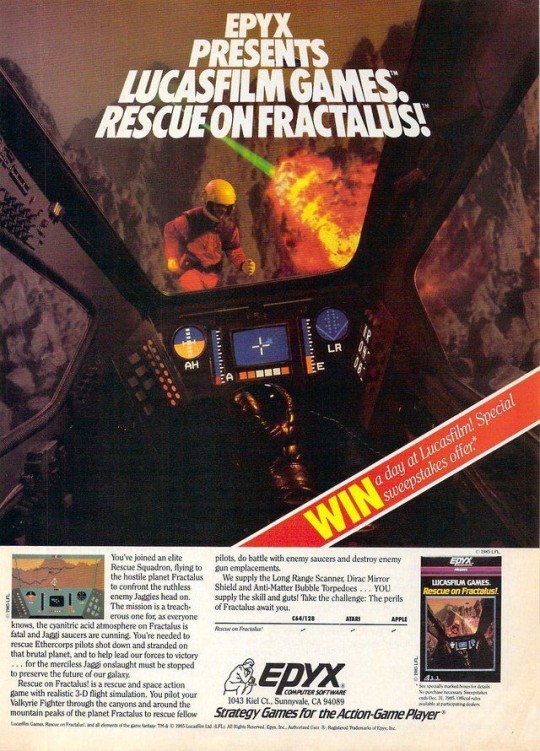
Rescue on Fractalus!
2 notes
·
View notes
Photo

Rescue on Fractalus! original cover VFX composite image by Industrial Light & Magic
#Atari#Atari 400#Atari 800#Lucasfilm Games#Rescue on Fractalus!#box art#photography#photo manipulation#video games#retro gaming#retro computing#Industrial Light & Magic
24 notes
·
View notes
Video
youtube
Video Games 1984 The fifth Arcade Awards are held, for games released during 1982-1983. Pole Position wins Coin-Op Game of the Year, Ms. Pac-Man wins console Videogame of the Year, Lode Runner wins Computer Game of the Year, and Q*bert wins dedicated Stand-Alone Game of the Year. For the second Golden Joystick Awards (held in 1985), Knight Lore takes Game of the Year. New Hardware in 1984 Apple Inc. announces the original, 128K, floppy disc-only, Macintosh. IBM releases the IBM PCjr in an attempt to enter the home computer market. It has improved sound and graphics over the original, business-oriented IBM PC, but is commercial failure. Atari announces the Atari 7800, a next-gen console that’s compatible with Atari 2600 cartridges. It is then shelved until 1986 due to the sale of the company and legal issues. Read more and vote for your favorite video games: https://ift.tt/2OkxV7z Games featured in this video: Excitebike Famicom Duck Hunt Famicom Hogan’s Alley Famicom Circus Charlie Arcade Return of the Jedi Arcade Tower of Druaga Arcade Ghostbusters c64 Montezuma’s Revenge Home Computer Boulder Dash Home Computer F1 Race Famicom Ice Climber Famicom Golf Famicom Tennis Famicom Dragon Buster Arcade Super Xevious Arcade Super Bagman Arcade Vulgus Arcade Star Force Arcade Antarctic Adventure Colecovision Lupin III Super Cassette Vision Pitfall II Atari 2600 HERO Atari 5200 & 8-bit HERO Commodore 64 Rescue on Fractalus Atari 8-bit Lode Runner Famicom Donkey Kong 3 Famicom Pinball Famicom Nuts and Milk Famicom Karateka Apple II Dragon Slayer PC-88 Ancient Art of War MS-DOS Beyond Castle Wolfenstein Home Computers Console Games 1984 Nintendo releases a conversion of their own Donkey Kong 3 for the Famicom/NES. Nintendo releases Ice Climber and Balloon Fight for the Famicom/NES. Activision releases Pitfall II: Lost Caverns, one of the last major titles for the Atari 2600. Each cartridge contains a custom chip allowing 4-voice sound. Computer Games 1984 Computer Video Games 1984: Alexei Pajitnov creates Tetris for the Electronika 60 in the Soviet Union. Elite, an influential wireframe 3D space trading game offering full six degrees of freedom and a then-unique open-ended design was released. Nihon Falcom releases Dragon Slayer, which lays the foundations for the action role-playing game genre. T&E Soft releases Hydlide, an early action role-playing game that features a health regeneration mechanic. Knight Lore by Ultimate Play the Game is released for the ZX Spectrum. It is the third title in the Sabreman series, but the first to use the isometric Filmation engine. Bullet-Proof Software releases The Black Onyx, which helps popularize turn-based role-playing games in Japan. Brøderbund releases The Ancient Art of War. It is a real-time tactics game and a precursor to the real-time strategy genre. Brøderbund also releases Karateka for the Apple II. Read more and vote for your favorite video games: https://ift.tt/2OkxV7z Arcade Games 1984 Arcade Video Games 1984: Namco releases Gaplus, the sequel to Galaga. Also, Namco releases the Tower of Druaga arcade game, a precursor to the action role-playing game genre. Data East releases Technōs Japan’s Karate Champ, laying the foundations for the one-one-one fighting game genre. Namco releases Pac-Land and lays the foundations for horizontally-scrolling platform games. Namco releases Grobda, a spin-off from Xevious. In addition, Namco releases Super Xevious and Dragon Buster, the latter of which is one of the first games to feature a life bar. Capcom releases 1942. Irem releases Kung-Fu Master and lays the foundations for the beat ’em up genre. Atari Games releases Marble Madness, their first game written in the C programming language and to use a 68000-family microprocessor. Gaming innovations 1984 Dragon Slayer lays the foundations for the action role-playing game genre Hydlide was an early action role-playing game that features a health regeneration mechanic Kung-Fu Master / Spartan X lays the foundations for the beat ’em up genre Read more and vote for your favorite video games: https://ift.tt/2OkxV7z Music featured in this video: Tower of Druaga Soundtrack https://www.youtube.com/watch?v=nr1YwmZ8jW0 Pitfall II Soundtrack https://www.youtube.com/watch?v=p9kgc7_yopM Star Force Soundtrack https://www.youtube.com/watch?v=ZZEbvpgDJyQ Marble Madness https://www.youtube.com/watch?v=HxAYJdLXgZo I do not own any rights for the music in this video! All rights for the music belong to the authors! by Retroconsole
3 notes
·
View notes
Text

UK 1987
#UK1987#GREMLIN GRAPHICS#ACCESS SOFTWARE#LUCASARTS#ACTION#SPORTS#BOXING#LICENSED#C64#SPECTRUM#AMSTRAD#RESCUE ON FRACTALUS#THE WAY OF THE TIGER#BEACH HEAD II THE DICTATOR STRIKES BACK#BARRY MCGUIGAN WORLD CHAMPIONSHIP BOXING#STAR GAMES ONE
13 notes
·
View notes
Text

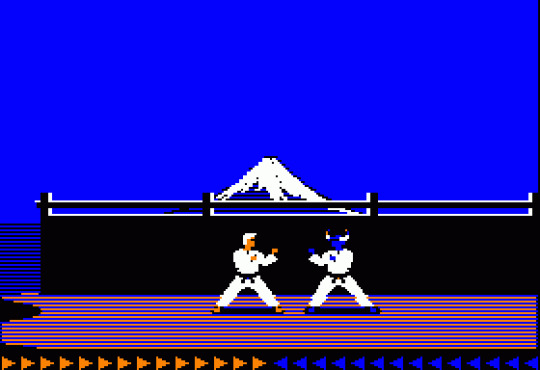
Karateka (Apple II)
Developed/Published by: Jordan Mechner / Broderbund
Released:15/11/1985
Completed: 04/10/2023
Completion: Beat it!
Version Played: The Making of Karateka
Trophies / Achievements: n/a
The first video game to use rotoscoping (well, according to the Guinness Book of World Records, so who am I to dispute) Karateka was Jordan Mechner’s first released game and, somewhat surprisingly, one of the first martial arts video games, with only Karate Champ, Yie Ar Kung-Fu and one other I’ll mention in a minute beating it to the punch (no pun intended). Mechner even originally intended it to be a one-on-one fighter much like Karate Champ, but (as recounted in The Making of Karateka, the recent deluxe re-release via which I played this) gradually shifted towards creating a more cinema-inspired game with a classic narrative: rescue a kidnapped princess.
I talked about it in my article on Super Breakout, but Karateka represents another perfect example of multiple discovery, released likely mere days after Data East’s Kung-Fu Master (aka Spartan X) was released in Japan, a cinema-inspired side-scrolling martial-arts game where you must rescue a kidnapped princess (well, your girlfriend. Every girlfriend is a princess. Am I right, fellas?)
They are somewhat different games: Kung-Fu Master is faster paced, with less of a focus on one-on-one combat and instead more enemies and less animation, but it places Karateka in a strange position in history. Kung-Fu Master is the immediately seminal title, directly inspiring both Super Mario Bros. and Street Fighter (!) where Karateka, a western game for home computers, seeded… Prince of Persia. But wait! Prince of Persia seeded more cinematic platformers, which begat Tomb Raider, which arguably created every triple A game we know today.
So wait, maybe Karateka actually is unbelievably important!
Anyway. In 2023 what stands out about Karateka on Apple II is that 1) it’s weirdly easy? and 2) it’s weirdly playable?
It’s honestly a very simple game. You run right. Sometimes the game actually cuts so you can see enemies running towards you (which is unusual, but interesting) and then you take fighting stance and fight them via punches and kicks of one of three heights. You can move forward while punching, but if you’re kicking you have to put your foot down after a few kicks. It’s basic, and for what all the talking heads in The Making Of claim, I’m not sure it’s actually that strategic, considering I could beat everyone by either just sticking to “keepaway” kicks or spamming punches while moving forwards, returning to keepaways if I needed to heal (interestingly, health recovers for both you and your enemy over time.)
There are some cheap deaths; you die if you run directly into anyone (rather than taking fighting stance.) There’s a bird that’ll fuck you up, and then a portcullis that you have to time exactly right, both of which extend things quite artificially in a game that has only one life. That said, however, I beat this on my second try, which I found really surprising. But speaking of point 2: there’s a smoothness to the animation (yes, even with the Apple II’s blazing 8 frames a second) and immediacy to the combat that makes it… fun, just in an unchallenging sort of way. I understand why kids at the time, facing the fact that they’d just dropped the equivalent of $100 or whatever on this, played it over and over, trying to speedrun it.
I’m not sure though if the lauded “cinematic” nature of this game hasn’t been a bit overblown, though. In 1984 cutscenes existed in other games, and are cutscenes something to be that celebrated? In 1984 we’ve got Rescue on Fractalus, King’s Quest, Lords of Midnight… and Infocom creating deep narratives that use the cinema of the MIND! (Ahem.) I think having cuts happen while you’re actually playing its… interesting. But there’s a fairly good reason why it hasn’t been used much since.
So Karateka, then. It feels like a weird game to me to get an insanely deluxe re-release with a full interactive museum, but it’s a surprisingly fun diversion for as long as it lasts.
Will I ever play it again? I don’t know. It’s such a breezy wee thing to have a go on I could be tempted, but I’m better off playing Kung-Fu Master, which terrified me as a child for reasons I’ll explain if I ever write it up.
Final Thought: Next week I’ll be taking a look at The Making of Karateka in depth, because I think it’s an interesting release in and of itself.
Support Every Game I’ve Finished on ko-fi! You can pick up a digital copy of exp. 2600, a zine featuring all-exclusive writing at my shop, or join as a supporter at just $1 a month and get articles like this a week early.
#video games#gaming#games#txt#text#review#nintendo#nintendo switch#the making of karateka#karateka#digital eclipse#jordan mechner#1985
1 note
·
View note
Text
Exploring Design Styles: Fractal Art
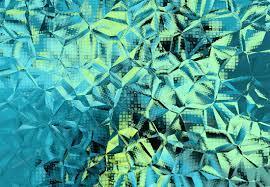
Fractal art sits at the intersection of design and mathematical calculation, which makes it completely mind-bending. this sort of algorithmic artwork results from fractal objects (never-ending patterns that are eternally complex and appear almost like the entire image) represented as various visual artforms, like animation and still images. consider this as mathematical beauty in visualization.
Part of the broader genre of latest media art, fractal art may be a trend that took shape within the mid-1980s. During that point , computer aesthetics also began to develop as an kind , as design became more digitized on the road to the 21st century.
Due to the mathematical complexity of those fractals, algorithmic art that comes with these patterns and shapes is usually mesmerizing and, some would say, hypnotic. One thing’s for sure: It’s an aesthetic that you’ll be easily ready to identify and won’t soon forget.
Prepare to urge your mind blown with this immersive walkthrough on digitized art.
The History of Fractal Art
To figure out where this trend came from, we've to travel back before the 1980s. This decade was known for very retro styles and typography, but, thanks to the then-nascent emergence of computers and therefore the Internet, also for technological inroads in design.
However, as a subset of algorithmic art, the roots of fractal design began with the American computer artist Roman Verostko. His claim to fame is that the invention of his proprietary software for creating original art, back within the 1960s. Verostko’s software manipulates the drawing arm of a pen plotter—a machine initially meant for engineering and architectural illustrations. Verostko’s software changed this application to function as an extension of the artist’s drawing hand and arm.
It’s important to notice that this was more along the lines of computer-generated art and style , as against fractal art proper, since the pc program was written to inform the pen plotter what to try to to (instead of the artworks being created inside computer memory). Still, this is often a distinction without a difference because all art created by fractals is predicated on software created by man (ie, the artist), after all.
To gain a far better understanding of this idea , have a glance at some fractal shapes that are created by designers:

Between the 1960s and mid-1980s, something very profound happened that gave this design trend its identity and name. This was the coining of the word “fractals” by Mandelbrot , a French-American mathematician, in 1975.
In reality, though, the concept of fractals has been around since the 17th century, when the German mathematician Gottfried Leibniz mused about self-similarity (possessing an equivalent , statistical similarity at different scales), a key principle in fractals. By the 19th century, another German mathematician, Karl Weierstrass, came up with the primary definition of a fractal (a function with a graph) while presenting to the Royal Prussian Academy of Sciences.
Still, we can’t ignore Mandelbrot’s contributions to the particular development of fractal art, which is usually created with fractal-generating software. His work led to many , key evolutions that might popularize fractal design within the 1980s:
In 1979, Mandelbrot and IBM programmers came up with the primary fractal printouts.
In 1980, special effects researcher and developer Loren Carpenter presents Vol Libre at SIGGRAPH (Special interest on special effects and Interactive Techniques), a two-minute, computer-generated movie that included fractally rendered landscapes.
In 1983, Acorn User magazine featured a BBC BASIC listing for creating fractal shapes.
Starting in 1984, computer games began to render fractal forms in games like Rescue on Fractalus!
Throughout the 1990s and into the 21st century, fractal art has intensified in popularity, because of the increasing use of software programs, also as designers and artists who are willing to experiment with this visualization of mathematical beauty derived from precision algorithms.
The Diversity of Fractal Imagery
The cool thing about this design trend is that the sheer number of various approaches to the present visualization. In essence, a special mathematical calculation results in a singular visualization of a shape. Here’s a fast rundown of all the ways in which algorithms and even artists and painters can express this style.
Standard Geometry Fractals
This type is predicated on standard geometry.

It relies on iterative transformations found on a starting figure, like a line (the Koch snowflake), a cube (the Menger sponge), or a triangle (the Sierpinski Triangle).
Strange Attractors
This is a gaggle of numerical values to which a mathematical system tends to evolve.
It must even have a fractal structure.
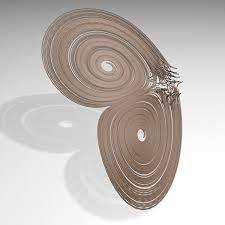
Iterated Function Systems
Iterated function systems are ways to make fractals.

They’re commonly two-dimensional creations and self-similar.
Newton Fractals
These sorts of fractal art created by applying Newton’s method within the plane of complex numbers.

They are boundary sets.
Fractal Flames
Created by Scott Draves, an American video artist and mathematician, in 1992, fractal flames are a part of the iterated function systems class of fractals.

However, they’re unique in their title because their color is predicated on structure rather than density or monochrome.
Mandelbulbs
Mandelbulbs are three-dimensional figures that were created in 2009 by Paul Nylander and Daniel White.
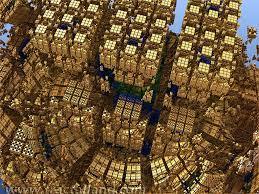
They were created with spherical coordinates.
L-System or Lindenmayer Fractals
Initially, a parallel rewriting system, the L-system or Lindenmayer system are often wont to generate self-similar shapes.

They’re also helpful in modeling the morphology of various organisms.
Fractal Landscapes
As the name implies, these are surfaces generated via algorithms meant to make fractals that replicate the design of natural terrain.
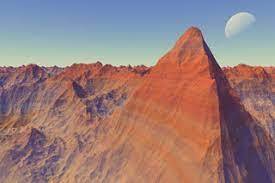
They are created by random fractal processes.
The final sort of fractal art are some things called fractal expressionism. this is often even more special than the shapes we’ve discussed up to the present point because these fractals are created completely by the artists themselves, as against mathematical calculations or computer generations.
For this sort , we've the American painter Pollock to thank. His famous painting style—which involved poured paintings and therefore the quite random wildness typified in other design trends like action painting—has been called both organic and natural by critics.
Fractal expressionism implies that artworks exhibit a straightaway representation of nature’s pattern in their creations.
For some more inspiration, inspect these fractal illustrations created by designers for designers:

The Design Characteristics of Fractal Art
By now, you’ve had an honest , in-depth check out the intricate, mind-bending formations of this digitized sort of art. Here are the common bonds which will always be present in any design that comes with this style:
Self-Similarity – A mathematical concept where an object will always be precisely or simply about almost like any a part of itself. In visual artwork, this suggests that a smaller a part of the entire design will look very almost like the whole and the other way around .
Psychedelia – this is often a regard to altered consciousness and styles that plan to recreate this psychological state , like surreal elements and distortions.
Intricate Patterns – A characteristic tied into the aforementioned self-similarity, this intricacy is seen within the sheer level of detail and complexity of any fractal pattern, given the magnitude of repetition of the shapes.
Mathematical Beauty – The premise on which all fractal art is predicated , mathematical beauty refers to the aesthetic enjoyment viewers get from the abstract, pure, and straightforward organization of math.
Patterns in Nature – Fractals are naturally found in nature in many formations, like clouds, shells, mountains, trees, coastlines, and snowflakes, to call just a couple of . Ergo, when admiring algorithmic art, you’re seeing the wildlife represented during a digitized form.
Vivid Colors – Perhaps the foremost striking feature of those shapes is that the color with which they’re displayed. Whether in manmade fractals (ie, Pollock paintings), natural patterns within the environment, or in digitized software, splendid colors are always an indicator of this design trend.
Now that you simply can identify this style wherever you notice it, let’s mention the interesting techniques at work behind the scenes when you’re beholding these awesome formations.
The Techniques Behind Fractals
For starters, the bulk of this artwork comes from algorithms and computer-generated software, with the brilliant colors mentioned above being intentionally added for pure, aesthetic effect. within the overwhelming majority of cases, it’s never drawn or painted by hand, though a number of the notable artworks from Pollock are the exception.
Fractal-creating software is usually the start line for this fractal art, following this sequence:
Establishing the parameters for relevant fractal software
Calculating the doubtless time-consuming algorithm
Assessing the result
In the post-processing phase, additional software could also be utilized to further change the pictures , and there may even be some non-fractal shapes thrown into the combination , supported the artist’s decision.
These days, everywhere you look, you’ll see fractals because the basis for various sorts of animation and digital art. They’ve also found application in various fields like:
Plant-growth simulation
Landscape generation
Texture generation
If you’d wish to try your hand at creating your own fractal masterpieces, there are various programs, both free and paid, that you simply can use:
Apophysis – For Microsoft Windows systems, this is often an open-source IFS program.
Chaotica – this is often a billboard IFS program specifically for Windows, Mac OS, and Linux. it's free for non-commercial use.
Electric Sheep – this is often open-source, distributed screensaver software that allows you to animate and evolve fractal flames, for display as screensavers on networked computers.
Terragen – A generator for fractal terrains, Terragen produces animations for both Mac OS X and Windows.
Ultra Fractal – Ultra Fractal is an app for generating and rendering fractals. First available in 1999, it’s since become one among the more popular pieces of software for experimenting with these digitized shapes.
Wolfram Mathematica – this contemporary technical computer system empowers you to make fractals.
Examples of Fractal Art
These mesmerizing patterns and shapes abound all around us, whether in nature, created by algorithms, or as tangible structures created by man. Here are some very noteworthy creations.
Manmade Structures
Main Dome of the Selimiye Mosque
In Edirne, Turkey, sits the Selimiye Mosque, which is on the UNESCO World Heritage Site list. If you visit it and inspect the inside of the mosque’s main dome, you’ll see stunning Islamic geometric patterns, which are very similar in design to the repeating sequences of fractals.

The more you check out the intricate forms and shapes, you start to understand that they share the self-similar trait so characteristic of geometry .
Hindu Temples
Another famous, manmade creation that bears a striking resemblance to the present mathematical artwork is that the Hindu temple. thanks to their penchant for repeating patterns and shapes across the whole , gigantic structure, these temples contain tons of styles which will be considered self-similar, which is that the calling card of fractal illustration and style.

Since the smaller parts of those temples resemble the entire structure, or maybe fit numerous times inside the whole whole, they're said to be fractal in nature.
Algorithmic Fractal Art
This is the “true” and more well-known application of this style once we speak of this trend. the merchandise of algorithms, computers, and programs, this approach to digital art is actually breathtaking and almost limitless in its creativity. Here are a number of the foremost memorable creations we could find.
3D Fractal Ball
Looking sort of a veritable cover from a Tool album, this digital artwork was created in Apophysis, the renderer and editor of fractal flames that’s available on both Mac and Windows,

If you look closely, you'll see that each one of the tiles that are on the black ground are almost like the whole presentation. Even the series of spheres within the center of the composition displays properties of fractal art, thereby making this creation extremely self-similar.
Random Fractal
Created with the Chaotica program for Mac OS X, Linux, and Windows, this random fractal shows what an artist can do with software that has the selective randomization of form parameters.

In essence, it lets the artist hand over a particular degree of control within the creation process. Note how this fractal is a smaller amount symmetrical or balanced that a number of the opposite fractal-based illustrations that we’ve shown you thus far . In spite of this, you'll still appreciate how the varied lines, forms, and patterns relate to every other and to the whole composition as an entire .
Electric Sheep Fractal
Here’s a picture of 1 of the various created through the electrical Sheep project. It shows a figure that’s self-similar, supported the interrogation point squiggles within the foreground being an equivalent shape because the same squiggles farther off within the background.

In addition, the larger, overall image is formed from many, smaller squiggles that appear to travel on forever.
Multi-Layered Fractal
Depending on the mathematical calculations used, a fractal could also be more or less complex. during this case, a multi-layered fractal is one that exhibits extra depth and complexity for the viewer to behold.

Made with the Ultra Fractal software app, this instance of fractal art showcases the immensely gorgeous colors that are possible with this approach to art. Amid the swirling yellows, pinks, reds, and purples, you furthermore may get to ascertain the intricate patterns and spiral shapes seem to stretch on limitlessly. In fact, the left side of the composition displays more complexity than does the proper side of the frame, which is dominated by more regular forms.
Sterling Fractal
Created within the Sterling computer virus , this specific fractal may be a great example of what artists can do with vivid, mind-blowing colors. Featuring mainly cooler colors, this shape calms during a very serene fashion.

From the standpoint of geometry, the composition is additionally a treat, because it features a plethora of curves, swirls, vanishing points, and other aesthetically pleasing forms.
Patterns in Nature
The cool thing is about this sort of art is that you simply can see it in nature, too, without the interference of man. In other words, nature has been creating these wondrous fractals since the start of time—well before our digitized culture started creating fractal art from the mid-1980s onward.
Here are a number of the foremost staggering shapes that nature has got to offer.
Nautilus Shell
Not only does the nautilus shell boast an intricate and interesting pattern, but it also demonstrates a logarithmic growth spiral. Put differently , the self-similarity that’s a key think about fractal art is clear within the development of the shell itself.
Note how the littlest shapes at the very center of the shell bear a striking resemblance to the growing and bigger patterns toward the surface of the shell.
Namib Desert Sand Dunes
The self-similarity of this design trend doesn’t just need to be present in natural objects that are self-contained. they will even be present within the environment, where outside forces act on the landscape itself. Case in point: the sand dunes of the Namib Desert of southern Africa.
The sand patterns are ever-changing because they form supported how the wind blows. However, both the ripples on the surface of the sand and therefore the crescent-shaped dunes themselves reform whenever there are appropriate conditions (read: when the wind blows effectively enough).
A Design Found in Algorithm Art and Nature
Though this digitized art first appeared within the mid-1980s, you'll convincingly argue that it’s been around forever thanks to its uncanny presence in nature. Indeed, perhaps in no other design trend is that the nexus between computerized influence and natural inclination so strong as during this one, learn graphic designing from the high instructions which is providing the best graphic designing course in Delhi
Whether digital or straight from nature, one thing’s clear: The self-similarity concept of this approach to art is mind-bending and wondrous. It’s also the idea of this fractal art, which ensures these timeless, unique designs will still inspire awe in viewers round the globe.
1 note
·
View note
Photo

Ball Blazer and Rescue On Fractalus for the #Atari 5200 #CIB
54 notes
·
View notes
Video
youtube
From Lucasfilm Games comes Rescue on Fractalus! The scariest Atari game since Way Out!
#the player and the doodler#rescue mission#rescue on fractalus#lucasfilm#lucasarts#let's play#atari#atari 800#scary game
5 notes
·
View notes